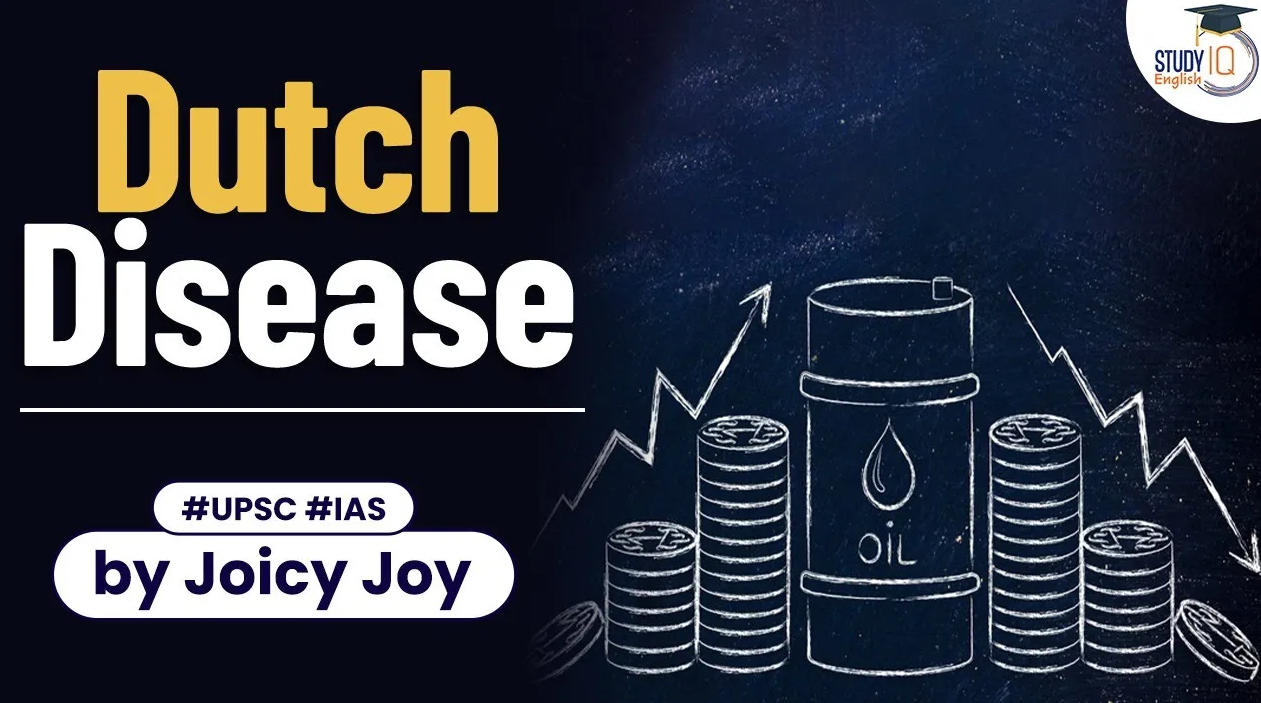Table of Contents
- Dutch Disease in economics refers to a phenomenon wherein a country witnesses uneven growth across sectors due to the discovery of natural resources, especially large oil
- According to the concept, when a country discovers natural resources and starts exporting them to the rest of the world, it causes the exchange rate of the currency to appreciate significantly and this, in turn, discourages the exports from other sectors while encouraging the import of cheaper alternatives.
ORIGIN OF THe TeRM DUTCH DISeASe
- The term Dutch disease was coined by The Economist magazine in 1977 when the publication analyzed a crisis that occurred in The Netherlands after the discovery of vast natural gas deposits in the North Sea in 1959.
- The newfound wealth and massive exports of oil caused the value of the Dutch guilder to rise sharply, making Dutch exports of all non-oil products less competitive on the world market.
- Unemployment rose from 1.1% to 5.1%, and capital investment in the country dropped.
- Dutch disease became widely used in economic circles as a shorthand way of describing the paradoxical situation in which seemingly good news, such as the discovery of large oil reserves, negatively impacts a country’s broader economy.
EXAMPLeS OF DUTCH DISeASe
- In the 1970s, Dutch Disease hit Great Britain when the price of oil quadrupled, making it economically viable to drill for North Sea Oil off the coast of
- By the late 1970s, Britain had become a net exporter of oil, though it had previously been a net importer.
- Although the value of the pound skyrocketed, the country fell into recession as British workers demanded higher wages and Britain’s other exports became
- In 2014, economists in Canada reported that the influx of foreign capital related to exploitation of the country’s oil sands may have led to an overvalued currency and a decreased competitiveness in the manufacturing sector.
- Simultaneously, the Russian ruble greatly appreciated for similar reasons.
- In 2016, the price of oil dropped significantly, and both the Canadian dollar and the ruble returned to lower levels, easing the concerns of Dutch disease in both countries.
HOW TO COMBAT DUTCH DISeASe?
- Role of Fiscal Policy:
- According to the researchers, the role of fiscal policy is important to control the boom following the discovery of natural resources.
- Rising income due to the export of natural resources should be adjusted with cautious spending on public welfare.
- Promote public spending policies:
- Public spending such as concentrating on imports of tradeables rather than non-tradables would help
- slow the impact of the Dutch disease.
- Private spending in order to improve the productivity of private firms would also help reduce the
- Role of Monetary Policy:
- With the discovery of natural resources, the country sees a huge inflow of money, especially foreign
- The export of natural resources tends to affect the equilibrium in the money and exchange rate
- The Dutch disease can be prevented if the central bank raises the banking system reserve’s requirement, which decreases domestic credit.
Indian Economy | Free PDF






















 WhatsApp
WhatsApp